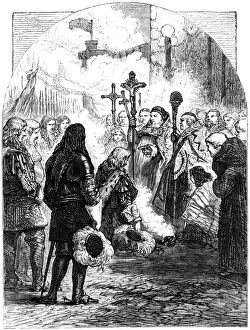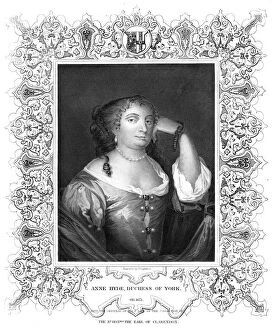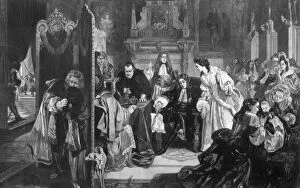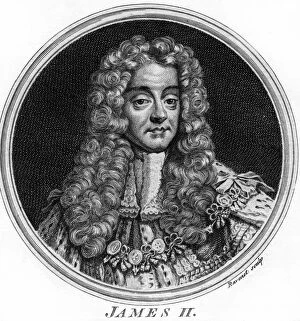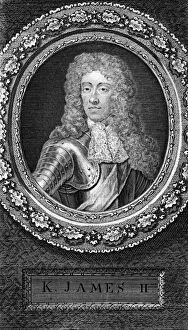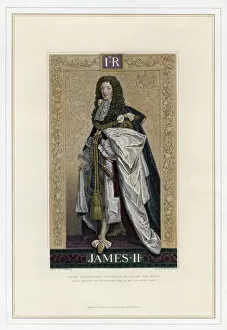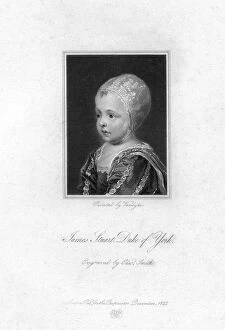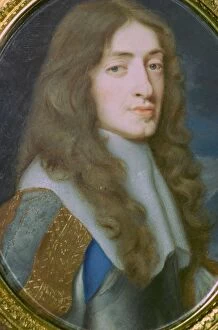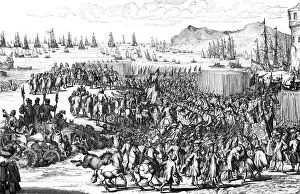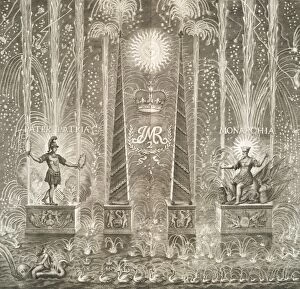King James Ii Collection (#4)
"King James II: A Royal Legacy Through the Ages" Step into history with King James II, a monarch whose reign left an indelible mark on England
For sale as Licensed Images
Choose your image, Select your licence and Download the media
"King James II: A Royal Legacy Through the Ages" Step into history with King James II, a monarch whose reign left an indelible mark on England. From his birth in 1633 to his tumultuous rule as king, this captivating figure has fascinated generations. At the Newmarket Race Course in 1940, a glimpse of King James II's passion for equestrian pursuits comes alive. Known for his love of horse racing, he was often seen at these prestigious events, cheering on his favorite steeds. Exploring the fashion trends during Charles I and II's reigns and that of James II reveals a fascinating tapestry of style. In 1903 and 1937 depictions, we witness the opulence and grandeur that characterized their courtly attire. A portrait from around 1700-1720 showcases Samuel Sewall adorned in a periwig and long coat—a fashion statement emblematic of King James II's era. This image captures the essence of an age defined by elegance and refinement. In another striking portrayal from 1935, we see King James II himself exuding regal authority. His commanding presence is undeniable as he gazes confidently into the distance—a true embodiment of royal power. Mary of Modena, wife to King James II, also played an influential role during their time together. An enchanting depiction from 1907 showcases her resplendent gown adorned with gems and pearls—an epitome of grace and beauty befitting her status as queen consort. The Stuarts' turbulent journey through history intertwines with significant events such as Oliver Cromwell's Commonwealth era or William and Mary ascending to power after the Glorious Revolution. Within this intricate web lies King James I followed by Charles I before ultimately leading to Charles II—the predecessor who paved the way for our enigmatic protagonist. The Coronation Dinner held in Westminster Hall in 1685 stands out among historical milestones.


